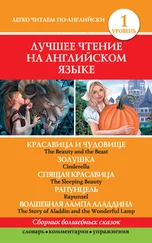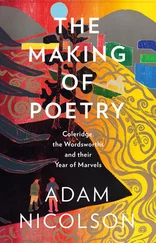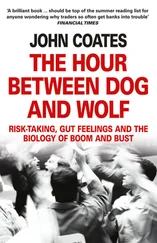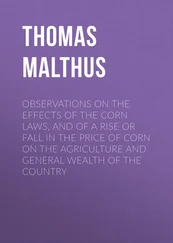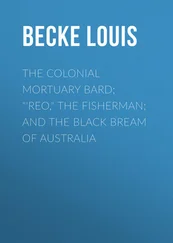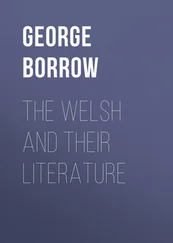Raja Rao - The Serpent and the Rope
Здесь есть возможность читать онлайн «Raja Rao - The Serpent and the Rope» весь текст электронной книги совершенно бесплатно (целиком полную версию без сокращений). В некоторых случаях можно слушать аудио, скачать через торрент в формате fb2 и присутствует краткое содержание. Год выпуска: 2014, Издательство: Penguin Publications, Жанр: Современная проза, на английском языке. Описание произведения, (предисловие) а так же отзывы посетителей доступны на портале библиотеки ЛибКат.
- Название:The Serpent and the Rope
- Автор:
- Издательство:Penguin Publications
- Жанр:
- Год:2014
- ISBN:нет данных
- Рейтинг книги:4 / 5. Голосов: 1
-
Избранное:Добавить в избранное
- Отзывы:
-
Ваша оценка:
- 80
- 1
- 2
- 3
- 4
- 5
The Serpent and the Rope: краткое содержание, описание и аннотация
Предлагаем к чтению аннотацию, описание, краткое содержание или предисловие (зависит от того, что написал сам автор книги «The Serpent and the Rope»). Если вы не нашли необходимую информацию о книге — напишите в комментариях, мы постараемся отыскать её.
The Serpent and the Rope — читать онлайн бесплатно полную книгу (весь текст) целиком
Ниже представлен текст книги, разбитый по страницам. Система сохранения места последней прочитанной страницы, позволяет с удобством читать онлайн бесплатно книгу «The Serpent and the Rope», без необходимости каждый раз заново искать на чём Вы остановились. Поставьте закладку, и сможете в любой момент перейти на страницу, на которой закончили чтение.
Интервал:
Закладка:
‘How was Vera?’ said Catherine. ‘You don’t need to go to India for a job, Rama. You look after Vera. Vera loves you: she is so quiet when you are here. And you can write your abstruse theories. I will give you back your small room. And Georges will drink chocolate and translate your clever ideas.’
‘I promise to stay if you will have a baby before I go,’ I said jokingly.
‘Now, now, Rama, you may have more intuition than you think you have.’ This from Georges.
‘Ah, là là!’ said Catherine, ‘A Brahmin after all.’
‘Do you know what a Brahmin is, Catherine?’
‘No, what is it?’ She came back, having gone halfway to the kitchen.
‘A Brahmin is he who knows Brahman. That is one definition,’ I said. ‘There is another, a roughish definition. A Brahmin is he who loves a good banquet.’
‘You certainly do not belong to the second category, poor dear, Rama, what shall we do when you are gone? You have become so like one of us. We will be lost.’
Georges looked at me. He looked so sad.
‘We must have been brothers in a past life,’ he said, as though to explain everything. Catherine must have heard it, through the kitchen wall. For she came back and said:
‘I must have been your wife. That is why Vera knows you. Marriages are made in Heaven, they say, don’t they? Sometimes they are made on earth.’
Georges and I went back to the kitchen with her. I said, ‘Catherine, I will tell you what: marriages are made in Benares.’
‘Georges, let us go to Benares,’ she said.
‘And what about the dead bodies, and the pyres, and the famous crocodiles that some French author saw with his own four eyes?’ I laughed. She had read about the crocodiles in some book and was convinced Benares had only floating dead bodies, beggars, and many cremation fires. She had also heard, seven miles away was Sarnath. That was where the Buddha had turned the Wheel of Law.
‘No, let us go to Travancore,’ I said.
‘Now, what is this new place?’ protested Catherine.
‘I have been telling you and myself a lie, all these years. My real home is in Travancore. Benares is there, and there you have no crocodiles or pyres.
‘It’s opposite Ceylon,’ said Georges, in geographic explanation; like me he was a born professor.
‘I will make chocolate for two in Travancore. Travancore, Travancore, there’s magic in that name!’ said Catherine.
And we went back to the plush chairs. The chocolate was very good.
Introduction: Notes
1Raja Rao, The Policeman and the Rose: Stories. Delhi: Oxford University Press, 1978, p. xiv.
2Raja Rao, The Chessmaster and His Moves. New Delhi: Vision Books, 1988, p. 1.
3R. Parthasarathy, ‘The Future World Is Being Made in America: An Interview with Raja Rao’, Span (September 1977): 30.
4Braj B. Kachru, The Indianization of English: The English Language in India. Delhi: Oxford University Press, 1983.
5Raja Rao, Kanthapura. London: Allen and Unwin, 1938. Reprinted 1963, New York: New Directions. Subsequent citations from the American edition are indicated in the text parenthetically by page number.
6Raja Rao, The Serpent and the Rope. London: John Murray, 1960. Subsequent citations from this edition are indicated in the text parenthetically by page number.
7I have not been able to trace the source of this quotation.
8Chāndogya Upanis.ad, VI.8.7, in The Principal Upanis.ads, ed. & trans. S. Radhakrishnan. London: Allen and Unwin, 1953, p. 458.
9Raja Rao, ‘The Writer and the Word’, The Literary Criterion 7.1 (Winter 1965): 231.
10Robert Redfield, Peasant Society and Culture: An Anthropological Approach to Civilization. Chicago: University of Chicago Press, 1956, pp. 67–104.
11Janet Powers Gemmill, ‘The Transcreation of Spoken Kannada in Raja Rao’s Kanthapura’, Literature East and West 18.2–4 (1974): 191–202.
12Gemmill, ‘The Transcreation of Spoken Kannada in Raja Rao’s Kanthapura’, p. 194.
13C.D. Narasimhaiah, ‘Indian Writing in English: An Introduction,’ The Journal of Commonwealth Literature 5 (1968): 14.
14Quoted in M.K. Naik, Raja Rao. Twayne World Authors Series. New York: Twayne, 1972, p. 106.
15Louis Dumont and David Pocock, ‘On the Different Aspects or Levels in Hinduism,’ Contributions to Indian Sociology 3 (July 1959): 45.
16Bhavabhuti, Rama’s Later History (Uttararāmacarita), part 1: Introduction and Translation by Shripad Krishna Belvalkar. Harvard Oriental Series, 21. Cambridge, MA: Harvard UP, 1915, p. 39.
17Raja Rao, The Cat and Shakespeare. New York: Macmillan, 1965, pp. 8–10. Subsequent citations from this edition are indicated in the text parenthetically by page number.
18Arthur Avalon, ed. Kulacūdāmani Nigama, with an introduction and translation by A.K. Maitra. Madras: Ganesh & Co., 1956, ch. 1, verses 25–26.
19Raja Rao, The Policeman and the Rose: Stories. Delhi: Oxford University Press, 1978, p. 88. Subsequent citations from this edition are indicated in the text parenthetically by page number.
20Rabindranath Tagore, Stories from Tagore. New York: Macmillan, 1918, p. 122. Subsequent citations from this edition are indicated in the text parenthetically by page number.
21Integral Yoga Institute, ed. Dictionary of Sanskrit Names. Yogaville, Buckingham, VA: Integral Yoga Publications, 1989, p. 57.
22Sushil Kumar De, ed., and Rev. V. Raghavan, The Meghadūta of Kālidāsa, 3rd ed. New Delhi: Sahitya Akademi, 1982, verse 11.
23Raja Rao, On the Ganga Ghat. Delhi: Orient Paperbacks, 1993, p. 112. Subsequent citations from this edition are indicated in the text parenthetically by page number.
24Sankara, Ātmabodhah.: Self-Knowledge, trans. Swami Nikhilananda. Madras: Sri Ramakrishna Math, 1967, p. 261, verse 11.
Notes
1
1A character in the Mahabharata, humiliated because he had walked into a mirror thinking it was a path in the park.
2The home of the Nehru family.
3
1The temple dancers who are dedicated to the gods. They belong to the concubine class.
22 A silk and spangled string in yellow, tied round the wrist by brothers and friends of a woman towards whom they feel protective, for rakhi means ‘protection’. The festival of Rakhi comes in the month of Sravan, in autumn, on the day of the full moon.
4
1The tiger’s sportfulness. The name of a metre.
2A musical instrument consisting of jars filled with water.
6
1The exact astrological time fixed for tying the tali round the neck of the bride. This is the most important part of the wedding ceremonies.
21693 CE
3It is believed the great Indian mathematician Ramanujan died in Cambridge of undernourishment, being a vegetarian.
4A small white wild-flower, considered very sacred.
7
1Satyavrata means, ‘he who has taken the vow-of-truth’.
2In the Mahabharata Savithri marries, against all odds, Satyavan (The Truthful) and conquers him back from Yama, the God of Death.
3Of the royal fold.
4It may be useful to remind the reader that Savithri and Ananda was the name of an opera Wagner wanted to write, which later became the Parsifal.
5The celibate, or he who has taken the vow of celibacy.
6He who fasts.
Acknowledgements
The dignity and precision of Sanskrit are so difficult to convey in translation that I have taken the liberty of using all the well-known translations to make my own versions of the texts quoted. Chief among the translators I am indebted to are: Sir Monier-Williams, A. B. Keith, Max Müller, the monks of the Ramakrishna Mission, Dr A. K. Coomaraswamy and, of course, Sir John Woodroffe. Sir John Woodroffe’s translations are so authentic that almost never have I had to correct them.
Читать дальшеИнтервал:
Закладка:
Похожие книги на «The Serpent and the Rope»
Представляем Вашему вниманию похожие книги на «The Serpent and the Rope» списком для выбора. Мы отобрали схожую по названию и смыслу литературу в надежде предоставить читателям больше вариантов отыскать новые, интересные, ещё непрочитанные произведения.
Обсуждение, отзывы о книге «The Serpent and the Rope» и просто собственные мнения читателей. Оставьте ваши комментарии, напишите, что Вы думаете о произведении, его смысле или главных героях. Укажите что конкретно понравилось, а что нет, и почему Вы так считаете.


